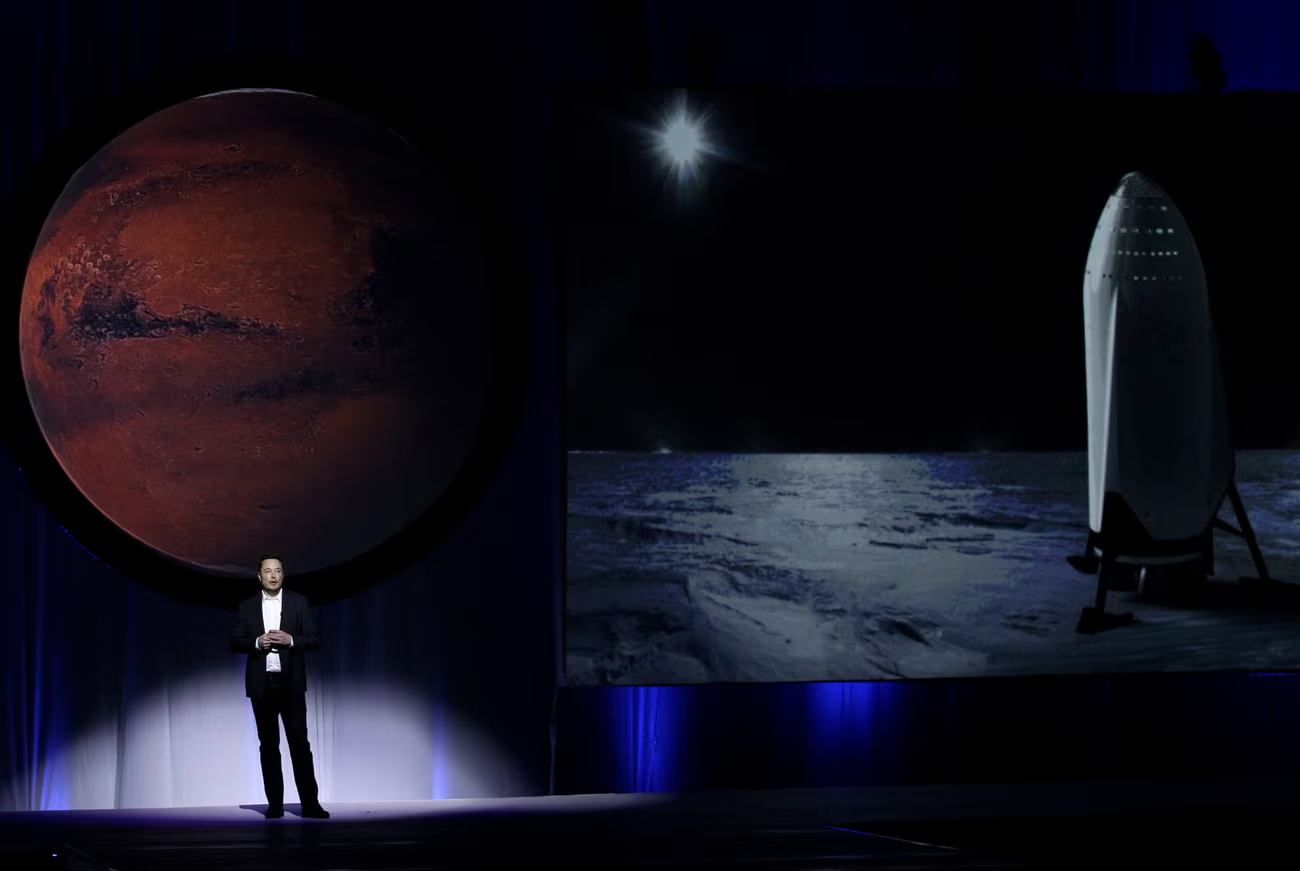Buried beneath a wave of right-wing rhetoric posted by Elon Musk on his platform X, was a statement that left space enthusiasts in awe: humans could land on Mars within four years and live in a self-sustaining city there within 20 years. While it seemed an ambitious claim even by Musk’s standards, NASA, which collaborates with SpaceX, believes a manned landing on Mars by 2040 is more realistic, calling it “audacious.”
This is not Musk’s first declaration about Mars. In 2016, he proposed crewed launches to the Red Planet within six years, despite a heavy rocket still being in concept stages. While many might brush off his latest statement as another instance of overconfidence, some analysts see a deeper purpose behind his vision.

Though the notion of a self-sustaining Martian city of a million people within two decades seems far-fetched, regular spaceflights via SpaceX’s Starship rockets carrying cargo and the first human explorers are entirely feasible, experts say. Despite Musk’s vast fortune of $250 billion, funding such a monumental endeavor would exceed even NASA’s $280 billion Apollo program that placed humans on the Moon in 1969. However, both public and private investors could rally around the mission’s promise.
For Musk, the Mars dream is fundamental to SpaceX’s identity. Harvard Business School’s Matthew Weinzierl says Musk’s aggressive timeline underscores SpaceX’s commitment to pushing boundaries and maintaining its role as an innovative force in the space industry. The company has already revolutionized space travel with its reusable Falcon rockets, and Musk’s vision has continued to attract talent, funding, and enthusiasm.
Weinzierl believes SpaceX’s strategy of reusable technology, seen in its Falcon rockets and Dragon capsules, could apply to Mars missions as well. However, he points out that while SpaceX could fund early missions through revenues from its Starlink satellite system and other ventures, establishing a million-person settlement on Mars is a vastly different challenge.
There are also technical hurdles. Starship, SpaceX’s next-gen spacecraft, has only undergone four test flights, with the first two ending in fiery failures. A planned fifth test was delayed over environmental concerns, and a refueling spacecraft is still required for long-distance trips. Space experts like Robert Zubrin, president of The Mars Society, believe that while a 2028 Mars launch is plausible, there’s still work to be done in developing surface systems for human operations, such as producing methane and oxygen on the planet.
Musk’s lofty timelines may often be overly optimistic, but his record of innovation and perseverance leaves room for cautious optimism. Even if SpaceX doesn’t meet Musk’s aggressive Mars goals, experts like Zubrin believe the company is likely to deliver on many aspects of his vision. As Weinzierl points out, SpaceX’s culture of innovation may now be so ingrained that even without Musk at the helm, the company could continue on its transformative path toward Mars.